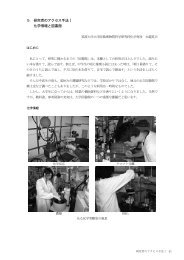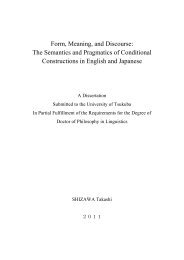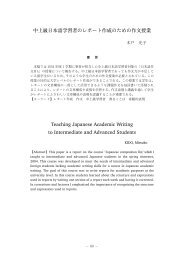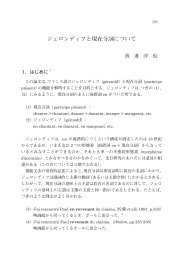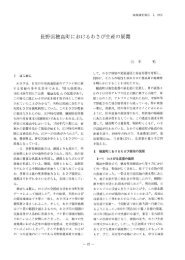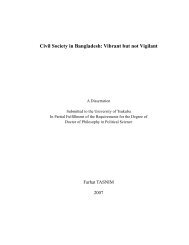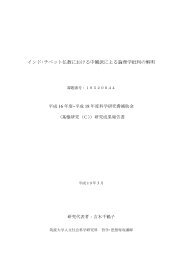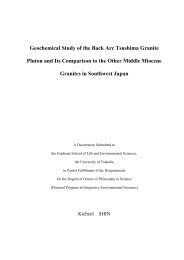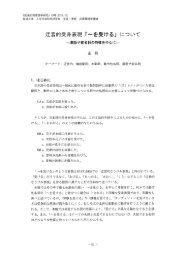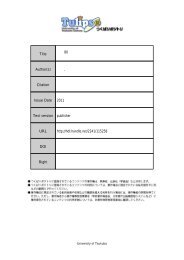TQM Model of Elements-Deployment Table Developed from Quality ...
TQM Model of Elements-Deployment Table Developed from Quality ...
TQM Model of Elements-Deployment Table Developed from Quality ...
Create successful ePaper yourself
Turn your PDF publications into a flip-book with our unique Google optimized e-Paper software.
the Antitrust Law <strong>of</strong> the USA, but the vertical is recognized as a category <strong>of</strong><br />
strategy, and the KEIRETSU <strong>of</strong> Toyota is thought the vertical type though a<br />
little characteristic difference is admitted. The specific reason is justified by<br />
“Design-to-Cost” that is enforceable in view <strong>of</strong> the management side.<br />
Accordingly, GWQM is the quality mind group corporate activities for<br />
improvement focused function that is originated <strong>from</strong> different angle to<br />
KEIRETSU but it has enough characteristics and performance for supplement<br />
to KEIRETSU effectively.<br />
(6) As for future direction <strong>of</strong> Qualiy Management, it could be heading to GLQM<br />
corresponding to the progress <strong>of</strong> the globalization <strong>of</strong> industrial development <strong>of</strong><br />
each company. International companies are constructed their own plant in<br />
forein countries under obligation <strong>of</strong> ISO 9000, ISO 14000, and QS 9000, etc.<br />
that global concept would be necessary to disseminate for uniform quality<br />
creation in any countries.<br />
(7) Corresponding to rapid advancement <strong>of</strong> the information technology, e-business<br />
or Virtual Enterprises/shop concepts are beginig to pick up as topic now. The<br />
E-commerce are further developed into BtoB (business to business), BtoC<br />
(business to consumer), and Intranet, too that GWQM itself are necessary also<br />
to reform into product by product, or project by project and cooperation between<br />
enterprises <strong>of</strong> global network.<br />
2.5.3 Construction <strong>of</strong> Social System around <strong>TQM</strong><br />
A social system around <strong>TQM</strong> in Japan is as follows.<br />
(A) Social system related to <strong>TQM</strong> (Fig. 2.6)<br />
The main group related to <strong>TQM</strong> in Japan: now.<br />
(1) Japanese Society for <strong>Quality</strong> Control (JSQC; establishment in April 1971)<br />
(2) Japanese Standards Association (JSA; establishment in December 1945)<br />
(3) Japan Productivity Center for Socio-Economic Development (JPC-SED)<br />
(4) Central QC Association (CQCA: established in April 1971)<br />
(5) Union <strong>of</strong> Japanese Scientists and Engineers (JUSE; establishment in May 1946)<br />
(6) Japan Management Association<br />
(7) Japanese Plant Maintenance Association<br />
(8) Japan Production Science Association (Establishment in October 1968)<br />
The organization mentioned in the above have been functioning under the core<br />
organization QCRG suggestion with sacrificing effort by physical implementing various<br />
pr<strong>of</strong>essional and operational group organization as shown in Fig. 2.6.<br />
The Japanese quality control concept implementation has been disseminated<br />
under a core body <strong>of</strong> QCRG guidance with pr<strong>of</strong>essional operational organization<br />
mentioned in the above, and industrial enterprise, university, governmental<br />
organization supporting and overseas guidance.<br />
52




